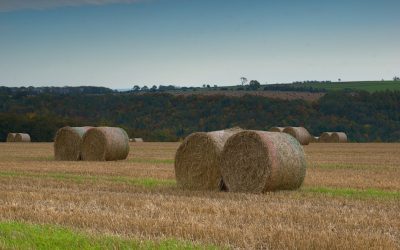Explore the World Through Geography, Natural Resources & Daily History
Clear, reliable and engaging guides that help you understand our planet — from UK geography education to global natural resources and On This Day history events.
Explore, discover, and learn about the wonders of our world! At Earth Site, we’re passionate about bringing geography, history, and science to life for curious minds of all ages. Whether you’re delving into historical events, uncovering the mysteries of the natural world, or seeking interactive resources, you’re in the right place.
Here, you can uncover the stories behind historical events, explore the natural wonders of our planet, and gain valuable insights into how the Earth’s systems shape our daily lives. From the towering peaks of mountain ranges to the far-reaching impacts of human innovation, we aim to make every topic both engaging and informative.
Start your journey of discovery with us today, and let’s make learning an adventure!
What We Cover
Earth Site brings together engaging and accessible educational content designed to help you understand the world, its history, and its natural systems.
🌍 Geography Education (UK & Worldwide)
We publish clear, easy-to-understand geography resources for students, teachers and curious learners. Our guides support geography education in the UK and cover physical geography, climate, ecosystems, population, and global development.
⛏️ Natural Resources & Environmental Geography
Explore detailed country profiles covering natural resources, mining, energy, geology and global environmental challenges. We show how nations manage minerals, water, land and ecosystems, and why these resources matter.
📅 On This Day in History
Every day has a story. Our On This Day history series features major events, anniversaries, traditions, and cultural milestones from around the world — with timelines, context, and fun facts.
TIMELINE
Key Stage 2 Maths for Ages 7 to 11
Key Stage 2 is a crucial stage in a child’s education, as it is the period when they transition from the foundational skills learned in Key Stage 1 to more complex concepts and topics. In the United Kingdom, Key Stage 2 covers children aged 7 to 11 years old, specifically Years 3 to 6. During this stage, children build upon their knowledge and understanding of mathematics, developing key skills that will serve as a foundation for their future learning. The Maths curriculum in Key Stage 2 is designed to ensure that children develop a deep understanding of mathematical concepts and are able to apply their knowledge to solve problems in real-life situations. The curriculum covers a wide range of topics, including number and place value, addition and subtraction, multiplication and division, fractions, measurement, geometry, statistics, and problem solving. Each topic is carefully structured to build upon previous learning and provide a solid foundation for future mathematical development. Summary Key Stage 2 Maths Curriculum covers a range of topics including number, measurement, geometry, statistics and problem solving. Understanding number and place value is crucial for building a strong foundation in maths. Addition and subtraction strategies such as using number lines and mental maths can improve fluency. Multiplication and division require practice and understanding of times tables and inverse operations. Fractions involve understanding equivalence, comparing and ordering, and can be applied to real-life situations. Number and Place Value: Understanding the Basics Number and place value is a fundamental concept in mathematics. It involves understanding the value of digits in a number and their position within that number. For example, in the...
Uncovering the Remarkable Properties of Rhenium (Re): A British Perspective
Rhenium (Re) is a chemical element with the atomic number 75 and the symbol Re. It is a silvery-white metal that belongs to the platinum group of elements. Rhenium has a high melting point of 3,180 degrees Celsius and a density of 21.02 grams per cubic centimeter, making it one of the densest elements known. It is also highly resistant to corrosion and wear, making it an ideal material for various applications. Rhenium is an essential element in various industries due to its unique properties. It is primarily used as an alloying agent in the production of superalloys, which are used in high-temperature applications such as jet engines and gas turbines. Rhenium is also used as a catalyst in the petrochemical industry, as a material for nuclear reactors, and in medical applications such as cancer treatment. Its versatility and exceptional properties make it a valuable element in modern technology. Summary Rhenium (Re) is a rare and valuable metal with unique physical properties. Rhenium (Re) was discovered in Britain in 1925 by two scientists working independently. Rhenium (Re) is an excellent catalyst with applications in various industries, including aerospace. Rhenium (Re) has potential uses in nuclear energy and medical applications. Rhenium (Re) is a material of choice for high-temperature applications and can be recycled for sustainability. The History of Rhenium (Re) Discovery in Britain Rhenium was first discovered in Germany in 1925 by Ida Noddack, Walter Noddack, and Otto Berg. However, it was British scientists who made significant contributions to the understanding and development of rhenium. In 1928, British chemists Arthur Dempster and Frederick Soddy independently discovered rhenium while studying...
Shining a Light on Tungsten: The Versatile Metal That Illuminates Our World
Tungsten is a crucial element in the world of illumination. It plays a vital role in providing efficient and long-lasting lighting solutions across various industries. Whether it is in light bulbs, LED lighting, automotive lighting, photography and film, industrial lighting, or medical applications, tungsten is at the heart of it all. Its unique properties make it the ideal choice for creating bright and durable lighting solutions. Efficient and long-lasting illumination is essential for a variety of reasons. Firstly, it ensures that spaces are well-lit, allowing people to see clearly and perform tasks efficiently. Whether it is in homes, offices, or public spaces, good lighting is crucial for productivity and safety. Secondly, efficient lighting solutions help conserve energy and reduce electricity costs. With the increasing focus on sustainability and energy efficiency, tungsten’s role in providing energy-efficient lighting solutions becomes even more significant. Summary Tungsten is a crucial element in illumination, with a long history of use in various applications. Tungsten filaments in light bulbs are highly effective, providing efficient and long-lasting illumination. LED lighting is the future of energy-saving illumination, with tungsten playing a key role in its development. Tungsten is also important in automotive lighting, photography and film, industrial lighting, and medical applications. Advancements in lighting technology and beyond will continue to rely on the unique properties of tungsten. A Brief History of Tungsten: From Discovery to Modern Applications Tungsten was discovered in the late 18th century by Swedish chemist Carl Wilhelm Scheele and Spanish chemists Juan José and Fausto Elhuyar. They isolated the element from its ore, tungstic acid, and named it “tungsten,” which means “heavy stone” in...
Tantalizing Tantalum: Exploring the Applications and Properties of Ta in Modern Technology
Tantalum is a rare and valuable metal that has played a significant role in various industries. It was first discovered in 1802 by Swedish chemist Anders Ekeberg, who named it after Tantalus, a Greek mythological figure. Tantalum is known for its high melting point, corrosion resistance, and ability to store and release electrical energy. These properties make it an essential material in the production of electronic devices, aerospace technology, medical implants, energy storage systems, and engineering applications. Summary Tantalum is a rare and valuable metal with unique physical and chemical properties. Tantalum plays a crucial role in modern technology, from electronic devices to aerospace and defence technology, medical devices, energy storage, and engineering. Tantalum capacitors are the backbone of electronic devices, providing high capacitance, stability, and reliability. Tantalum alloys offer exceptional strength, durability, and corrosion resistance in engineering applications. Tantalum mining and extraction raise environmental and ethical concerns, but sustainable practices and technological advancements can address these challenges. Understanding the Physical and Chemical Properties of Tantalum Tantalum has an atomic number of 73 and belongs to the transition metal group on the periodic table. It has a dense, grayish-blue appearance and is highly ductile and malleable. Tantalum has a melting point of 3,017 degrees Celsius, making it one of the highest melting points among metals. It also has excellent corrosion resistance, which allows it to withstand harsh environments and corrosive substances. Chemically, tantalum is relatively inert and does not react with most acids or bases at room temperature. However, it can react with hydrofluoric acid, sulfuric acid, and alkalis at elevated temperatures. Tantalum forms a protective oxide layer when...
Suffolk, England
Located on the eastern coast of England, Suffolk is a county known for its rich history, natural beauty, and cultural offerings. With its picturesque landscapes, charming towns and villages, and vibrant arts scene, Suffolk has something to offer every visitor. Whether you’re interested in exploring historical landmarks, enjoying outdoor activities, or indulging in delicious local cuisine, Suffolk has it all. Suffolk has a long and fascinating history that dates back to Anglo-Saxon times. The county was once part of the Kingdom of East Anglia and played a significant role in the development of England. Today, visitors can explore the remnants of this rich history through the county’s many historical sites and landmarks. In addition to its historical significance, Suffolk is also known for its natural beauty. From its stunning coastline to its rolling countryside, the county offers a variety of landscapes to explore. Whether you prefer coastal walks, countryside trails, or nature reserves, Suffolk has plenty of options for outdoor enthusiasts. Summary Suffolk, England is a land of heritage and beauty, with a rich history and stunning natural landscapes. From Anglo-Saxon times to the present day, Suffolk has a fascinating history waiting to be discovered. Coastal walks, countryside trails, and nature reserves offer endless opportunities to explore the natural beauty of Suffolk. Historic towns and picturesque villages are among the best places to visit in Suffolk. Suffolk’s cultural scene is vibrant, with art, music, theatre, and festivals to enjoy throughout the year. Discovering the Rich History of Suffolk: From Anglo-Saxon Times to the Present Day Suffolk has a long and storied history that spans over a thousand years....
Staffordshire, England
Located in the heart of England, Staffordshire is a county with a rich history and vibrant culture. It is bordered by Cheshire to the north, Derbyshire and Leicestershire to the east, Warwickshire to the south, and Shropshire to the west. The county has a diverse landscape, ranging from the stunning natural beauty of the Peak District to the industrial heritage of the Potteries. Staffordshire is home to many notable landmarks and attractions. One of the most famous is Alton Towers, a world-renowned theme park that attracts visitors from all over the globe. The county is also known for its historic towns and cities, such as Lichfield and Tamworth, which are steeped in history and offer a wealth of archaeological sites to explore. With its mix of natural beauty, industrial heritage, and cultural attractions, Staffordshire has something for everyone. Summary Staffordshire is a county with a rich history and culture, offering a variety of experiences for visitors. The natural beauty of Staffordshire can be explored through the Peak District and Cannock Chase. The industrial heritage of Staffordshire can be discovered through the Potteries and other sites. Archaeological sites in Staffordshire, such as Lichfield and Tamworth, offer fascinating insights into the past. Staffordshire’s vibrant arts scene includes museums, galleries, and theatres, providing entertainment for all. Exploring the Natural Beauty of Staffordshire: From the Peak District to Cannock Chase The Peak District is a stunning national park that spans across several counties, including Staffordshire. It is known for its rugged landscapes, picturesque villages, and outdoor activities. Visitors can explore the park on foot or by bike, taking in the breathtaking views...
Yorkshire, England
Located in the northern part of England, Yorkshire is the largest county in the country. With an area of over 11,000 square kilometers, it is home to a population of around 5 million people. Yorkshire is known for its diverse landscapes, ranging from rolling hills and picturesque dales to rugged coastlines and vibrant cities. It is a land of beauty and contrasts, offering something for everyone. Yorkshire has long been renowned for its natural beauty and diverse landscapes. From the stunning Yorkshire Dales National Park to the rugged coastline along the North Sea, there is no shortage of breathtaking scenery to explore. The county is also home to several Areas of Outstanding Natural Beauty, including the North York Moors and the Howardian Hills. Whether you enjoy hiking through lush green valleys, cycling along scenic country lanes, or simply taking in the views from a cozy pub, Yorkshire has it all. Summary Yorkshire is a diverse and beautiful region in the north of England. The area has a rich history, from Roman times to the Industrial Revolution. The Yorkshire Dales offer stunning natural scenery and outdoor activities. The Yorkshire coast boasts beaches, cliffs, and charming seaside towns. Leeds, Sheffield, and York are vibrant cities with plenty to see and do. Yorkshire’s Rich History: From Roman Times to the Industrial Revolution Yorkshire has a rich and fascinating history that spans thousands of years. The county was first inhabited by the Romans, who established a number of settlements and built roads throughout the region. The Vikings also left their mark on Yorkshire, with their influence still evident in place names and...
The Rising Demand for Hafnium: Exploring the Applications and Advancements in British Industries
Hafnium is a rare metal that is often overlooked due to its scarcity, but it possesses unique properties that make it highly valuable in various industries. It is a lustrous, silvery-gray metal that is resistant to corrosion and has a high melting point. Hafnium is often found in zirconium minerals and is extracted as a byproduct of zirconium production. One of the key properties of hafnium is its ability to absorb neutrons, making it an ideal material for nuclear reactors. It also has excellent high-temperature stability, which makes it suitable for use in aerospace and defence applications. Additionally, hafnium has been found to have biocompatible properties, making it useful in medical technologies. Summary Hafnium is a rare metal with unique properties that make it valuable in various industries. Hafnium is used in aerospace, defence, nuclear reactors, semiconductors, gas turbines, medical technologies, coatings, automotive, and 3D printing. Hafnium-based alloys are being developed for nuclear reactors to improve their safety and efficiency. Hafnium is used in the production of superalloys for gas turbines, which can withstand high temperatures and pressures. The global hafnium market faces challenges in supply chain disruptions and increasing demand, but also presents opportunities for growth and innovation. Hafnium Applications in Aerospace and Defence Industries Hafnium’s high-temperature stability and resistance to corrosion make it an ideal material for use in aerospace and defence industries. It is used in the production of jet engine components, such as turbine blades and vanes, where it helps improve the performance and durability of these critical parts. Hafnium’s ability to withstand extreme temperatures also makes it suitable for use in missile nose cones...
West Yorkshire, England
West Yorkshire is a county located in the northern part of England. It is one of the metropolitan counties and is bordered by South Yorkshire, North Yorkshire, East Riding of Yorkshire, Lancashire, and Greater Manchester. The county has a population of approximately 2.3 million people, making it one of the most populous counties in England. Summary West Yorkshire is a county in England, located in the north of the country. The area has a rich history, with evidence of human settlement dating back to the Bronze Age. West Yorkshire is known for its diverse geography, including rolling hills, valleys, and moors. The region has a strong cultural identity, with traditions such as brass band music and Yorkshire pudding. West Yorkshire has a diverse economy, with industries ranging from manufacturing to finance and tourism. History of West Yorkshire West Yorkshire has a rich history that dates back to ancient times. The area was settled by the Celts and later by the Romans, who established a fort at Ilkley. However, it was during the industrial revolution in the 18th and 19th centuries that West Yorkshire truly flourished. The county became a major center for the textile industry, with cities like Leeds and Bradford becoming renowned for their woolen mills and textile factories. The textile industry played a significant role in shaping the landscape and economy of West Yorkshire. The county became known as the “wool capital of the world” and was responsible for producing a large portion of Britain’s textiles. The industrial revolution brought about rapid urbanization, with towns and cities growing rapidly to accommodate the influx of workers. West Yorkshire...
South Yorkshire, England
South Yorkshire is a county located in the northern part of England. It is bordered by West Yorkshire to the north, North Yorkshire to the east, Derbyshire to the south, and Nottinghamshire to the west. The county is known for its rich industrial heritage, stunning landscapes, and vibrant cultural scene. South Yorkshire is home to several major cities and towns, including Sheffield, Rotherham, Barnsley, and Doncaster. These urban centers have played a significant role in the history and development of the region. South Yorkshire holds great importance in England due to its historical significance and economic contributions. During the Industrial Revolution, the county became a major hub for coal mining, steel production, and manufacturing. The region’s industrial prowess helped fuel the growth of the British Empire and played a crucial role in shaping the country’s economy. Today, South Yorkshire continues to be an important center for industry and innovation, with a diverse economy that includes manufacturing, services, and tourism. Summary South Yorkshire is a region in England known for its industrial heritage and stunning natural landscapes. The area has a rich history, from the Industrial Revolution to modern times, and is home to many historic landmarks and museums. South Yorkshire is characterized by its rolling hills, winding rivers, and picturesque valleys, making it a popular destination for outdoor enthusiasts. The region is home to several major cities and towns, including Sheffield, Rotherham, Barnsley, and Doncaster, each with its own unique character and attractions. South Yorkshire is a hub of culture and tradition, with a thriving music and arts scene, as well as numerous festivals and events throughout the year....
West Sussex, England
West Sussex is a county located in the south of England, known for its rich history, stunning natural landscapes, and vibrant cultural scene. This blog post will provide a comprehensive overview of all that West Sussex has to offer, from its historical sites and natural beauty to its top places to visit, cultural offerings, culinary delights, sporting activities, education system, business environment, transport options, and community spirit. Whether you are planning a visit or considering making West Sussex your home, this guide will give you a detailed insight into what makes this county so special. Summary West Sussex has a rich history dating back to Roman times, with many historic sites to explore. The countryside and coastline of West Sussex offer stunning natural beauty, perfect for outdoor activities. From charming villages to bustling towns, West Sussex has a variety of places to visit and explore. The cultural scene in West Sussex is vibrant, with art, music, and theatre events happening throughout the year. West Sussex is known for its local specialties and top restaurants, offering a diverse food and drink scene. The History of West Sussex: From Roman Times to the Present Day West Sussex has a fascinating history that dates back to Roman times. The Romans occupied the area and built several settlements, including the city of Noviomagus Reginorum (now known as Chichester). The county was later settled by the Anglo-Saxons and became part of the Kingdom of Sussex. Over the centuries, West Sussex played a significant role in English history, with events such as the Norman Conquest and the English Civil War leaving their mark on the...
Worcestershire, England
Worcestershire is a county located in the West Midlands region of England. It is bordered by the counties of Warwickshire, Gloucestershire, Herefordshire, Shropshire, Staffordshire, and the West Midlands. The county has a population of approximately 590,000 people. Worcestershire is known for its rich history and cultural heritage, with evidence of human habitation dating back to the Stone Age. Summary Worcestershire is a county in England known for its beautiful countryside and rich history. From Roman times to the present day, Worcestershire has played an important role in shaping England’s history. The county is home to famous landmarks such as the Worcester Cathedral and the Malvern Hills. Worcestershire is also known for its delicious cuisine, including the famous Worcestershire sauce. Visitors can explore the countryside through walking, cycling, and other outdoor activities, and enjoy the county’s sporting heritage through cricket, rugby, and horse racing. The History of Worcestershire: From Roman Times to the Present Day Worcestershire has a long and fascinating history that dates back to Roman times. The Romans established a settlement in the area known as “Viroconium Cornoviorum,” which was an important trading center. After the departure of the Romans, the area was settled by the Anglo-Saxons and became part of the Kingdom of Mercia. Throughout its history, Worcestershire has been involved in key historical events. During the English Civil War, the county was a stronghold for the Royalists, and the Battle of Worcester in 1651 was one of the final battles of the war. The Industrial Revolution brought significant changes to Worcestershire, with the development of industries such as ironworks and textiles. Notable figures from Worcestershire’s...











